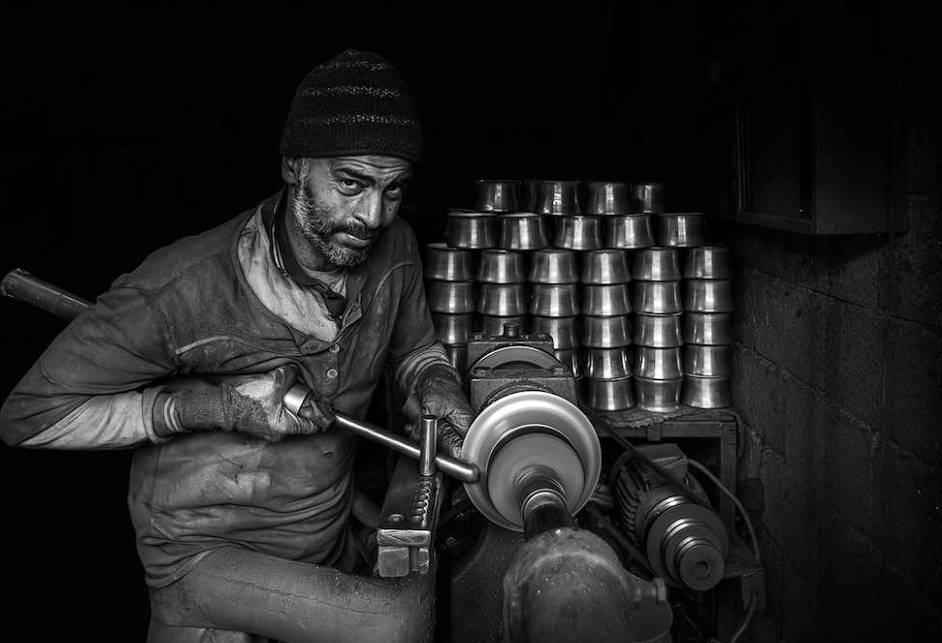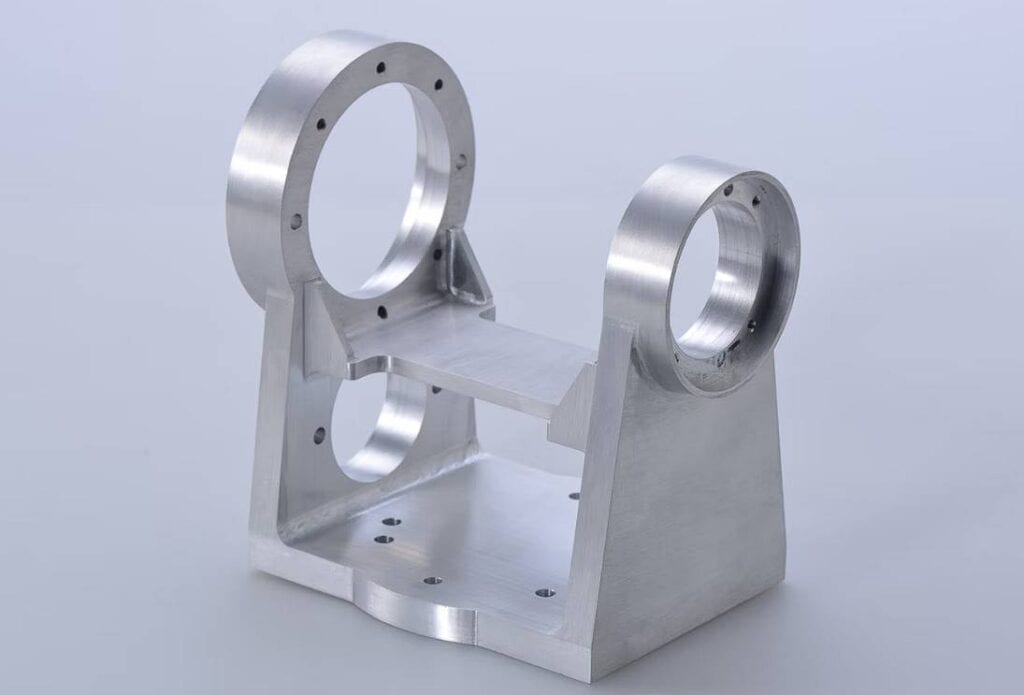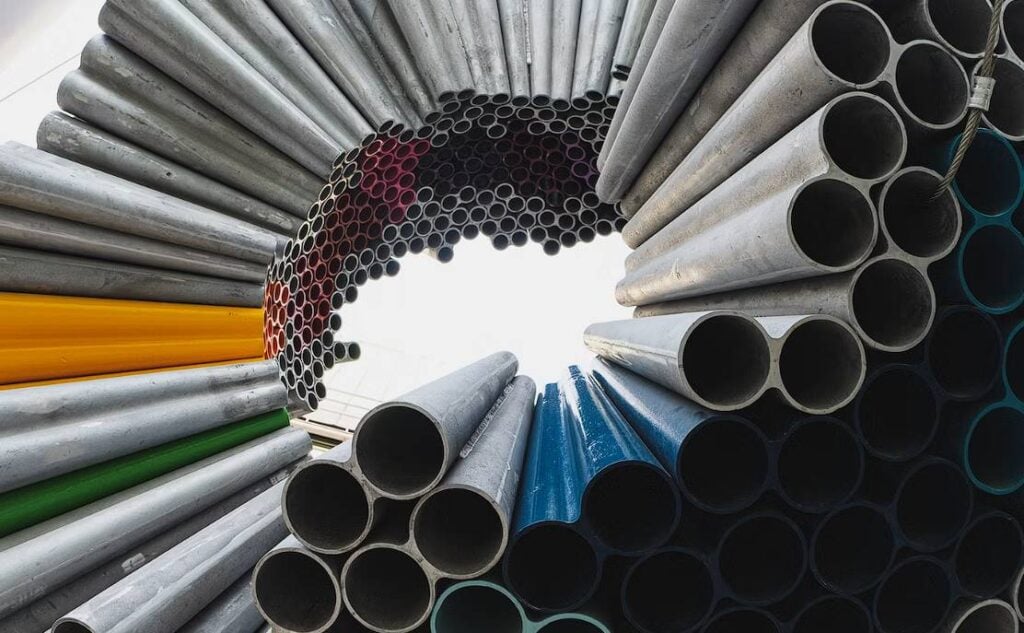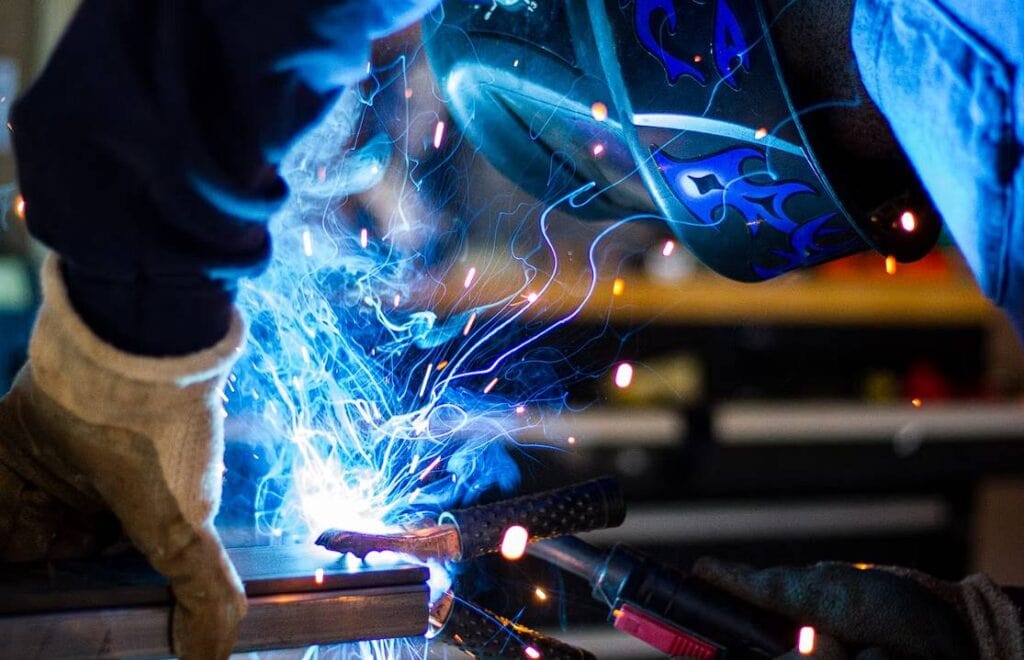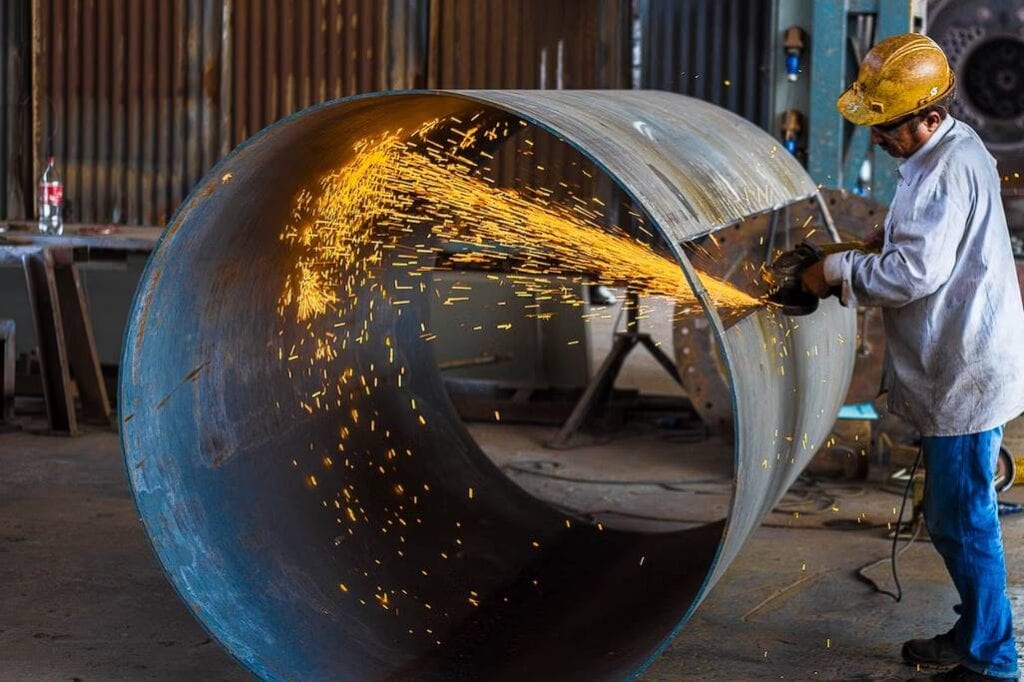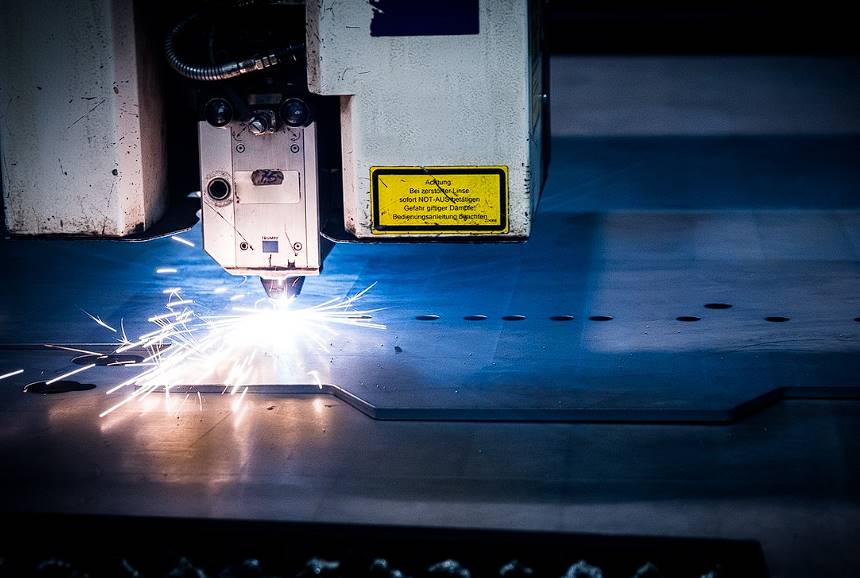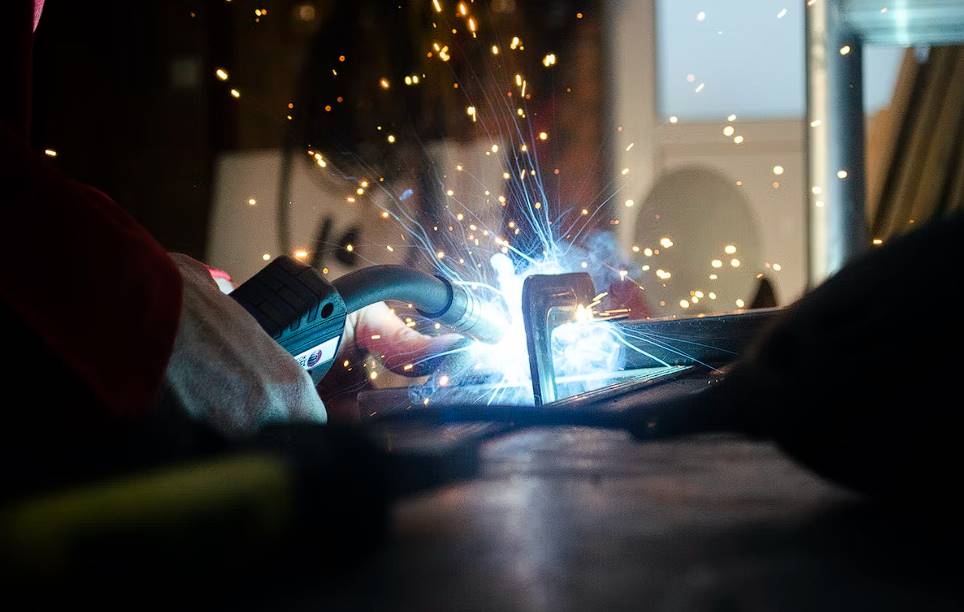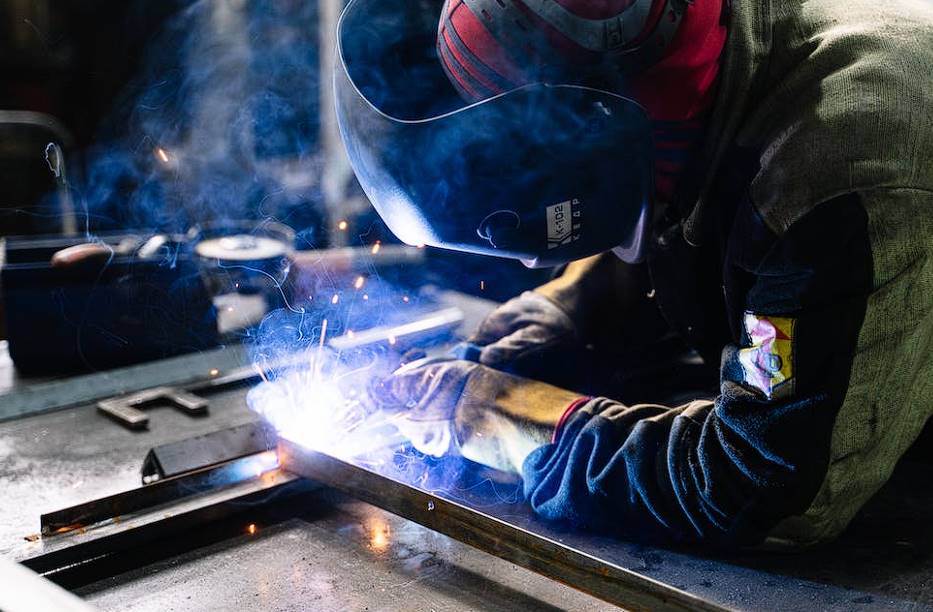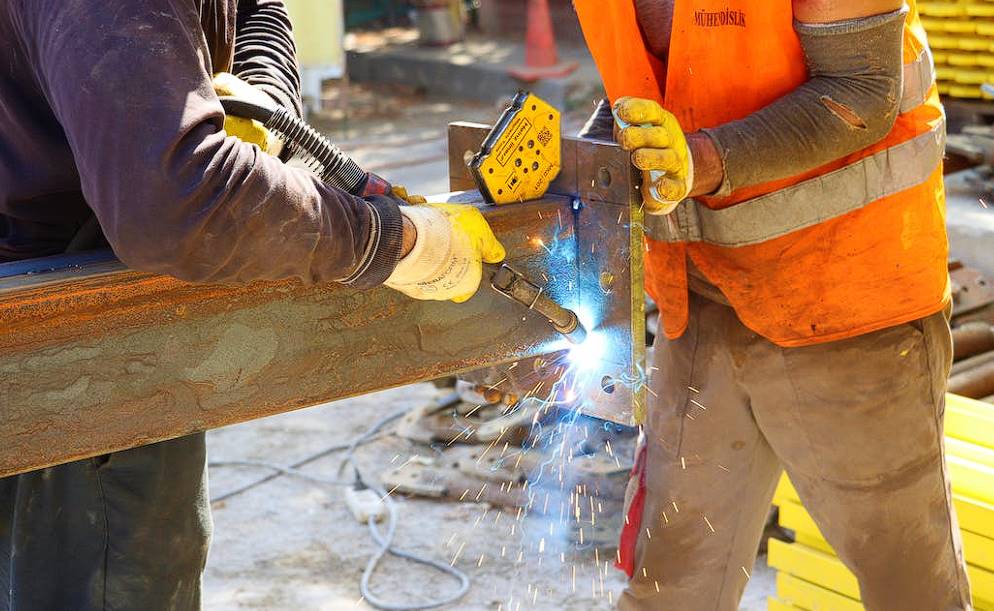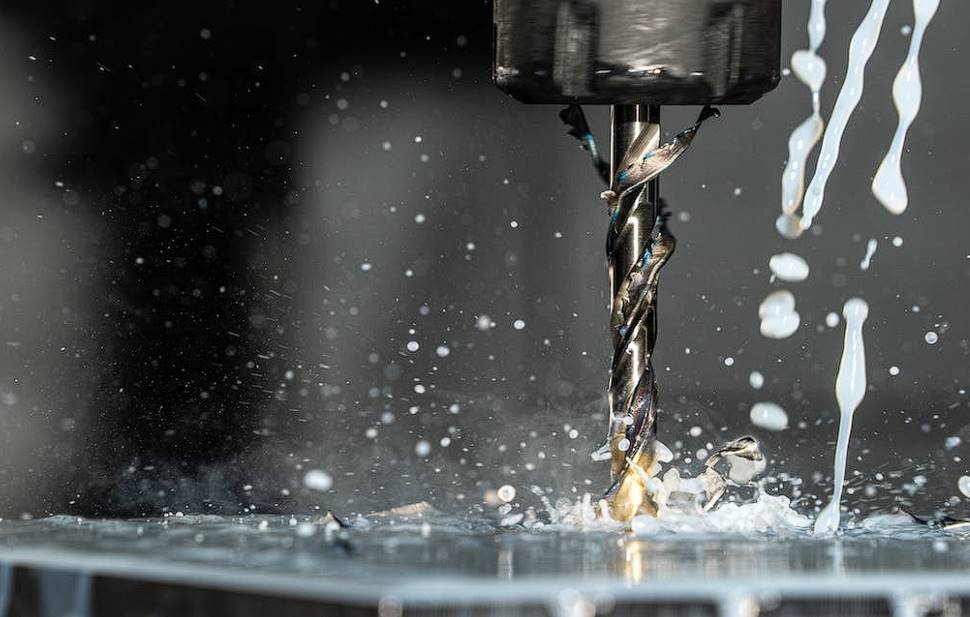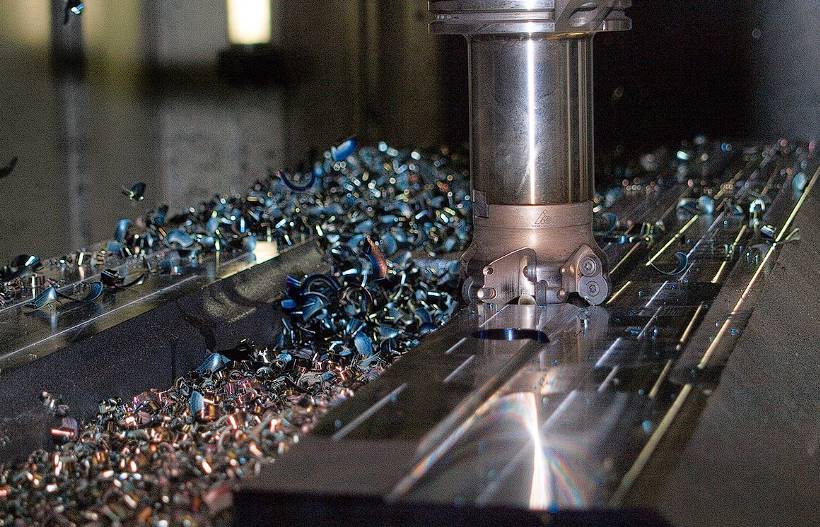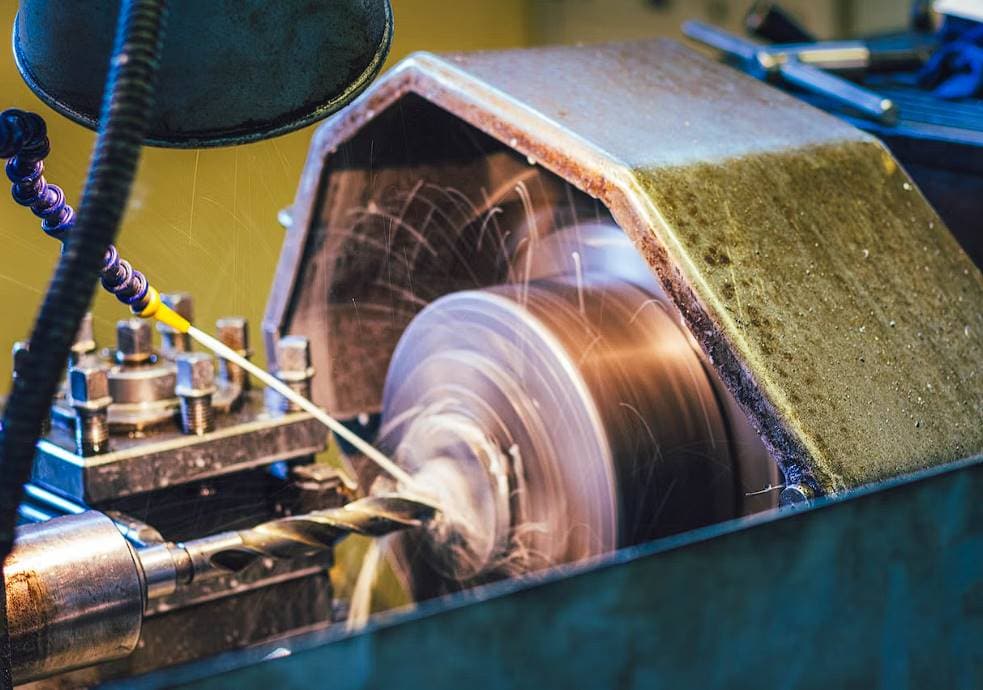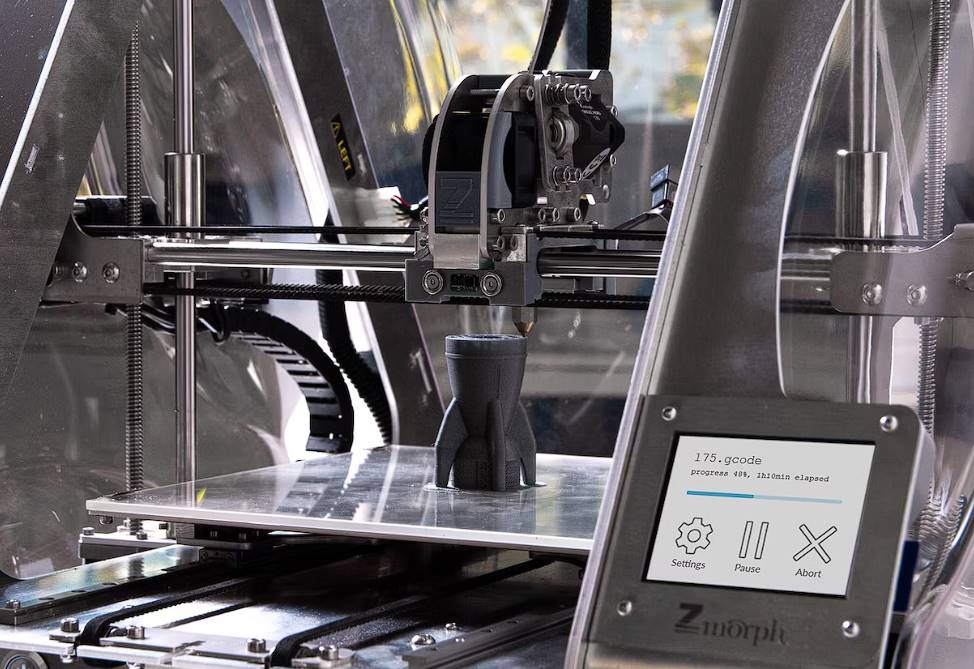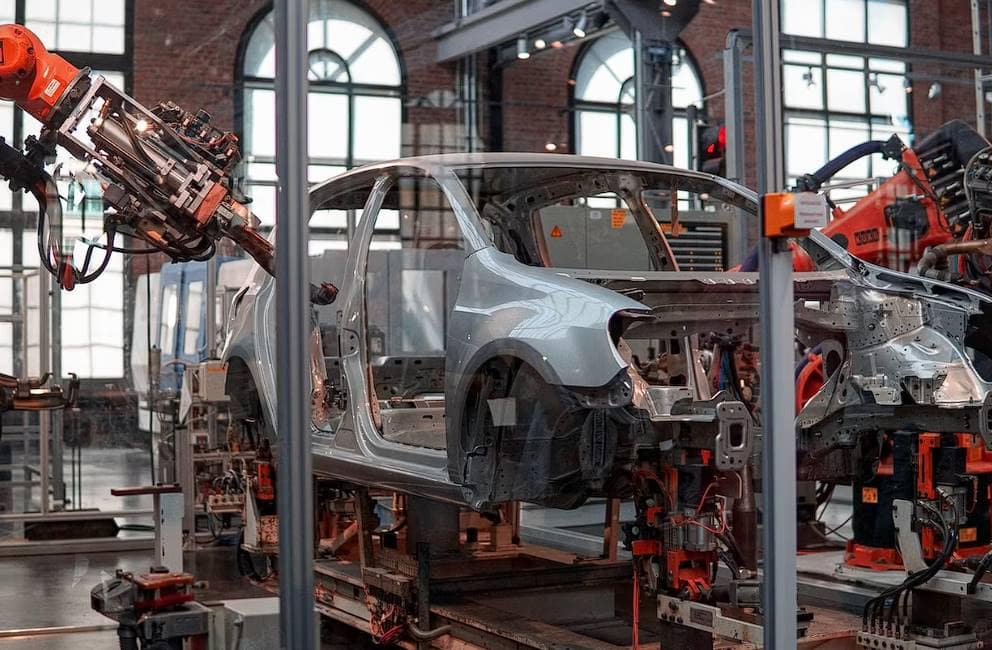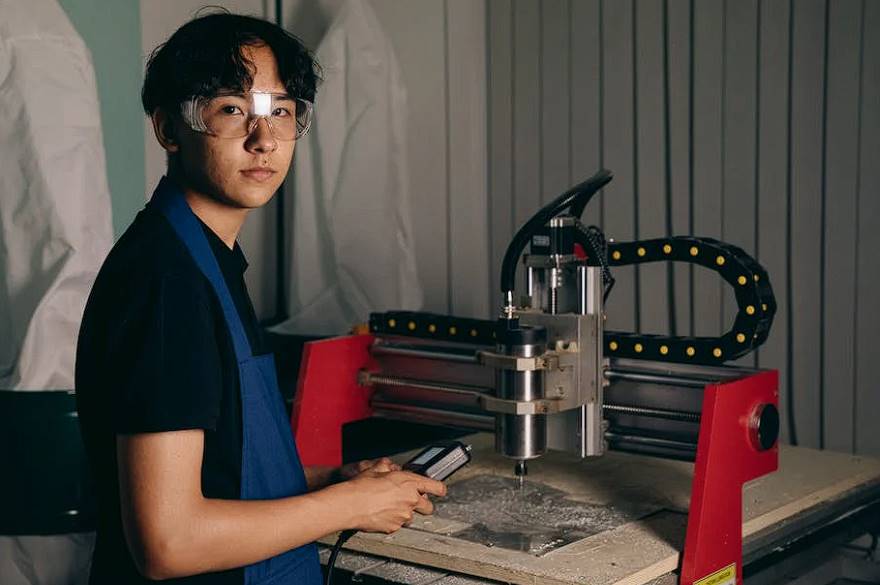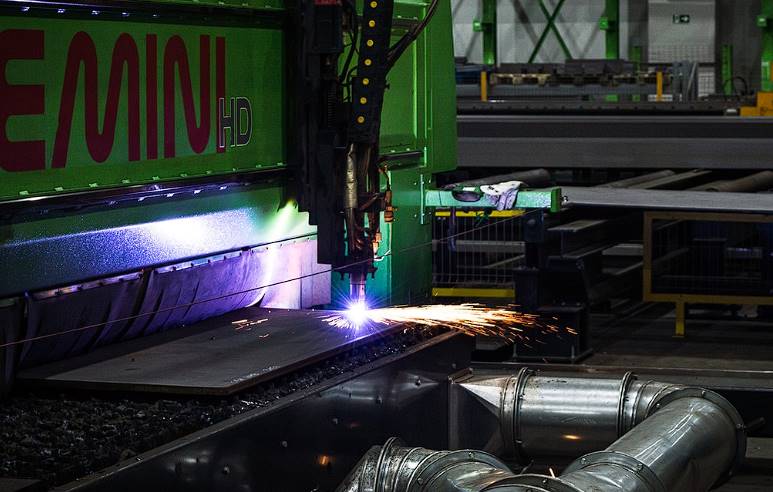Metal spinning, a metalworking technique that dates back millennia, has become a major factor in contemporary production methods. Metal spinning's revolutionary potential is rooted in its capacity to transform metal into complex shapes and patterns. Metal spinning offers unrivalled advantages, including low production costs, flexibility in design, and the ability to produce lightweight, durable parts. In this piece, we explore the fascinating benefits of metal spinning and its far-reaching effect on the industry. Let's go on an adventure to learn about all the potential applications of metal spinning.
What Is Metal Spinning?
Spinning metal is an industrial procedure that shapes metal into a yarn-like form. The procedure involves the rapid rotation or spinning of a metal disc or tube. The metal is transformed into a symmetrical component during the rotation.
Contrary to popular belief, the material is not removed from the workpiece during metal spinning. Instead, physical moulding is used to achieve the desired shape in the metal with minimal waste.
Metal spinning can be done either by hand or with a CNC lathe. However, be aware that there are several metals and methods for spinning them.
The basic steps in the procedure are straightforward. A round blank (either flat or performed) is held on a lathe while the tool spins. Next, a roller tool is formed around the blank as it rotates.
A smooth surface is produced without the need for additional finishing due to the grain structure being compressed while the blank is pressed against a mandrel.
Depending on the nature of the component, metal spinning techniques may change. In addition, the price of the metal spinning lathe is similarly affected. Therefore, there will be a price difference between the methods.
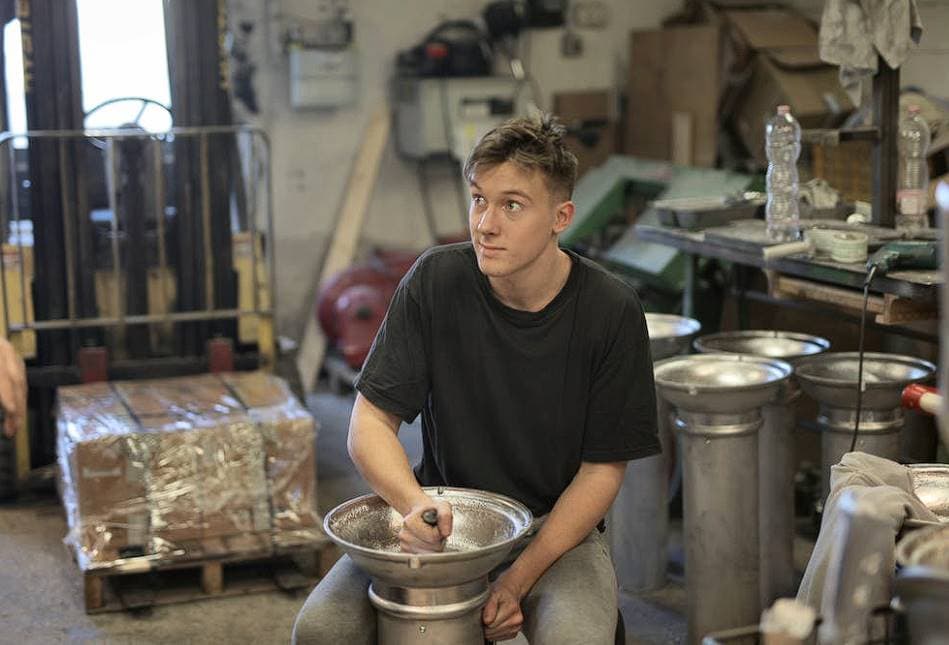
Metal Spinning: A Brief History
The practice of metal spinning is steeped in history. The traditional Egyptian potters' wheel is thought to have inspired the spinning technique. However, although the main evidence of metal spinning techniques for forming metals occurred within the mediaeval centuries, metals were only formed much later.
An ancient wood carving depicting a metal spinner at work on what are metal vessels also attests to the existence of the spinning process.
Wood, bronze, stone, and amber were the only materials used to spin in those distant times.
Advantages Of Metal Spinning
Very Reasonable Price
Spinning is a low-cost alternative to traditional manufacturing processes, including casting, tooling, and stamping. Compared to other production methods, the final goods are relatively cheap.
You Can Easily Alter Your Design
Thanks to the inexpensive price tag and quick implementation time, you're not tied down to one certain layout for very long. However, it may be necessary to shift focus throughout the prototyping phase.
Production methods that need a mould or die cast can be time-consuming and costly, which might be a major hassle in the long run if you need more confidence in your final design.
Since the only true cost of metal spinning is the metal you choose to use and the labour involved, there is little resistance to making alterations.
Short Processing Times
Metal spinning is the answer for low to medium-quality products that need to be made in under three days, and the turnaround time can be days, which is efficient considering the low cost of tooling in-house.
Spinning metal by hand requires less time to set up and allows for more precise quality control. In addition, the thickness and stability of the finished product can be better managed when the spinning is done by hand.
Generally speaking, the CNC lathes are the way to go for larger orders. Fast, high-quality mass production is now possible thanks to these machines.
Adjustable Quantity Ordering
Metal spinning allows for greater flexibility because it is not contingent on a certain number of consumers placing orders. In addition, metal spinning can be done cheaply, whether requiring a single prototype or a large quantity.
Manual or semi-automatic tools may be the best option for low quantities or prototypes. In contrast, automated CNC metal spinning machinery is often used for production runs of a larger scale. The equipment is always ready to switch to the material that will allow for the highest output.
An Excellent Choice for Symmetrical Components
When making symmetrical components, metal spinning is a cost-effective manufacturing method. Spinning can create objects from a wide range of metals, but it's most effective for components that fit a narrow range of shapes. You'll have to keep those constraints in mind as you design.
Best-performing shapes include:
- Parabolas
- Cylinders
- Hemispheres
- Cones Bells
- Shaping doughnuts
- Hourglasses
Fortunately, there are innumerable commercial uses for these components. Things like gas canisters, urns, and bells come to mind. Cookware and decorative lights made from spun metal are two examples; other uses include agriculture and aerospace.
No Seams in Spun Parts
Spinning also eliminates seams, which is a bonus. This means they can better cope with increased internal and external stressors. They're able to tolerate greater demands, whether internal or external. The grain structure is realigned, strengthening the spinning components and explaining the increased toughness.
The method also makes it possible to employ thinner material in places requiring thicker. Because of its robust, seamless design, products like CO2 cartridges and dive tanks can be produced.
Metal spinning can also be used to mass-produce smaller hardware items. Also, things like lock tumblers and car components.
The low unit cost of metal spinning makes it ideal for producing both unique things and limited quantities of components derived from expensive metals like platinum. Alternatively, aluminium and copper components may be mass-produced affordably.
Spinning equipment leaves a flawless finish, which could lead to significant cost savings since it eliminates the need for additional finishing processes. In addition, this glossier finish requires less post-production tooling.
Eco-friendly metal spinning
Last but not least, metal spinning is a viable industrial strategy if you're concerned about the environment. Spinning generates negligible amounts of pollution and trash.
Sometimes, blanks can be fabricated with no use of toxic chemicals and recycled resources.
Materials Commonly Used In The Spinning Process.
Steel
Material selection for spinning components is driven primarily by budget, desired part shape, and end use. Steel is often less expensive than other metals, but the price of commodities, fuel, and input materials can all significantly impact the industry.
Steel is much tougher than aluminium and has a long lifespan. Because of its durability, it resists warping, distortion, and bending when subjected to intense pressure or high temperatures. Steel, meanwhile, has a high density. Its density is 2.5 times that of aluminium. Steel-spun components benefit from this because they are protected from dings and scratches.
Aluminium
Aluminium is more pliable and elastic than steel but is also more expensive. As a result, it can be utilised to spin forms with more depth and complexity than would be possible with steel.
Spun aluminium doesn't need any additional protection from the elements because of the metal's inherent resistance to corrosion and lack of rust. In addition, since coating/painting is optional, corrosion is not an issue due to scratching and surface wear. Because of this, aluminium is the best material to use in harsh conditions like these.
Copper
Metal spinning frequently employs copper, steel, and aluminium, among other materials. It's not magnetic, can be used for various purposes, and looks great. However, copper is typically more costly than steel or aluminium.
It is well-known for its high ductility/workability, antibacterial nature, recyclability, corrosion resistance, and thermal/electrical conductivity. Intriguingly, its tensile strength increases by a factor of two after being worked hard. In addition, copper is a malleable and pliable metal.
Lighting fixtures, medical instruments, pipelines, sinks, roofs, and even jewellery are some of the many uses for copper-spun parts.
Major Industries That Use Metal Spinning
Air Movement / Heating, Ventilating, and Air Conditioning
Metal spinning is frequently used for air circulation. Spinning metal is perfect for making AC flanges, duct casings, and outlets.
Ductwork flanges are utilised to establish a tight seal against air leaks. This ensures a solid link between the ductwork and machinery receiving air conditioning or heating from the system. Hoses and pipes are often connected to tanks or other containers containing pressurised liquid, gas, or steam using flanges.
Duct casings safeguard the inner workings of a heating, ventilation, and air conditioning (HVAC) system against damage during installation.
Metal spinning is used to make flanges for HVAC systems, which facilitates installation by reducing the amount of wear on other components. Over time, this method lowers HVAC maintenance costs by reducing the frequency with which HVAC equipment requires repairs that would otherwise be required if plastic components were employed.
Filtration
Filters used in water purification facilities, swimming pools, and elsewhere are produced using metal spinning. High-pressure streams won't damage metal spinning filters' ability to trap hazardous particles.
Filters used in various settings, including water filtration systems, are manufactured using metal spinning. As a result, filters are crucial in many manufacturing operations, allowing for the highest quality output possible. In addition, workers are protected from inhaling or ingesting potentially dangerous substances thanks to filters.
Oil and Gas
Metals are essential in the production and exploration of oil and gas because they are utilised to construct virtually all of the necessary machinery. The three most common metals today—aluminium, stainless steel, and carbon steel—each have their own challenges.
- Oil & Gas: Corrosion Resistance - Oil refineries and other facilities that store, process, or transport chemicals through pipelines may have corrosion resistance issues.
- Oil & Gas: Fire Safety - Offshore drilling platforms, chemical plants, petrochemical facilities, and other industrial process facilities must all have adequate fire safety measures. When coated with a powder or paint finish coating like PTFE or another fluoropolymer resin system, metal spun components can be a lightweight alternative to conventionally welded structures, offering high strength, corrosion resistance, and high-temperature capability.

Aerospace
Metal spinning is a common manufacturing process for aerospace components like aeroplanes, rockets, spaceships, and missiles.
Metal can be spun into incredibly complex shapes, making feasible patterns that would be hard to produce with any other method.
Aluminium alloys are commonly utilized in the aircraft industry because of their light weight and excellent strength-to-weight ratio.
Architectural
Railings and handrails are only two examples of the many architectural uses for metal spinning.
Window guards, fences, gates, and grilles are all spun metal.
Even municipal courthouses and police stations may have security gates made of spun metal.
Automotive
Metal spinning has applications beyond the automotive sector. Metal spinning is used in various applications, from automobile engines and transmissions to bicycle brakes. Some applications of metal-spun components in automobiles are listed below.
- Aluminium alloy is smelted and spun into the gas tank.
- The aluminium alloy fuel tank is yet another metal spinning component. It's a common choice for replacing cars that are getting rusty from age or neglect.
- Wheel components; the rim is just one component. The tire rests on the rim's outermost edge.
Food Service
Metal spinning is an important sector of the food service business. Many products in this sector make use of metal spinning, such as:
- Cutlery and platters
- Tools and machinery for the food industry
- Tools and machinery for food packaging
- Tools for cooking food
Metal Spinning's high-quality and long-lasting parts are well-suited for usage in the food and food-processing industries. Producing such goods requires equipment that is robust, reliable, and clean.
Conclusion
Spinning metal into a yarn-like form is an industrial process. To produce the desired shape in the metal with minimal waste, the metal is physically moulded by rapidly rotating a disc or tube. Advantages of metal spinning include low production costs, design flexibility, and the capacity to make lightweight, durable parts as compared to more traditional manufacturing procedures like casting, tooling, and stamping. Metal spinning is an ancient practise, with artefacts indicating its use dates back millennia. The ability to mass-produce low-cost, customizable, and lightweight, long-lasting components is a major plus.
Metal spinning is a low-cost production technique for symmetrical shapes like parabolas, cylinders, hemispheres, cones, bells, doughnuts, and hourglasses. You may do it by hand or use CNC lathes for larger orders, and it takes less time to set up and provides for more exact quality control. Gas canisters, urns, bells, cookware, ornamental lighting, agriculture, and aerospace are just some of the many commercial applications that benefit from its symmetry. Metal spinning is a manufacturing process that results in useful products like CO2 cartridges and diving tanks. Mass production of smaller hardware items like lock tumblers and auto parts also rely on it.
Metal spinning is a great option for making one-of-a-kind items or small batches of components made from precious metals due to its cheap unit cost. Spinning metal creates very little waste and pollutants, making it an environmentally beneficial process. Steel, aluminium, copper, and zinc are some of the most popular materials used in the spinning process. Steel is more durable and long-lasting than aluminium, yet aluminium is more malleable and elastic. Copper is not magnetic, has many applications, and has a pleasing aesthetic.
Lighting, medical equipment, pipes, sinks, roofing, and jewellery are just few of the various uses for copper. Filters used in water purification facilities, air conditioning flanges, duct casings, and outputs are all products of metal spinning. Due to corrosion resistance and fire safety concerns, metal spinning is crucial in the production and exploration of oil and gas. Flanges for heating, ventilation, and air conditioning systems, as well as filters used in water purification facilities, are both products of metal spinning. Metal spinning is a less weighty replacement for traditional welding that nonetheless provides the same durability, resistance to corrosion, and ability to withstand high temperatures.
Aerospace, architectural, automotive, and food service products all make use of it. Due to its low weight and high strength-to-weight ratio, aluminium alloys find widespread use in the aerospace sector. Metal spinning also finds application in automotive powertrains, gearboxes, and bicycle braking systems.
Content Summary
- Metal spinning, a metalworking technique that dates back millennia, has become a major factor in contemporary production methods.
- Metal spinning's revolutionary potential is rooted in its capacity to transform metal into complex shapes and patterns.
- Metal spinning offers unrivalled advantages, including low production costs, flexibility in design, and the ability to produce lightweight, durable parts.
- In this piece, we explore the fascinating benefits of metal spinning and its far-reaching effect on the industry.
- Let's go on an adventure to learn about all the potential applications of metal spinning.
- Spinning metal is an industrial procedure that shapes metal into a yarn-like form.
- Metal spinning can be done either by hand or with a CNC lathe.
- Depending on the nature of the component, metal spinning techniques may change.
- The traditional Egyptian potters' wheel is thought to have inspired the spinning technique.
- However, although the main evidence of metal spinning techniques for forming metals occurred within the mediaeval centuries, metals were only formed much later.
- Still, the materials utilised will determine the final price.
- Thanks to the inexpensive price tag and quick implementation time, you're not tied down to one certain layout for very long.
- Production methods that need a mould or die cast can be time-consuming and costly, which might be a major hassle in the long run if you need more confidence in your final design.
- Since the only true cost of metal spinning is the metal you choose to use and the labour involved, there is little resistance to making alterations.
- Spinning metal by hand requires less time to set up and allows for more precise quality control.
- In addition, the thickness and stability of the finished product can be better managed when the spinning is done by hand.
- Fast, high-quality mass production is now possible thanks to these machines.
- In addition, metal spinning can be done cheaply, whether requiring a single prototype or a large quantity.
- Manual or semi-automatic tools may be the best option for low quantities or prototypes.
- In contrast, automated CNC metal spinning machinery is often used for production runs of a larger scale.
- When making symmetrical components, metal spinning is a cost-effective manufacturing method.
- Spinning can create objects from a wide range of metals, but it's most effective for components that fit a narrow range of shapes.
- The grain structure is realigned, strengthening the spinning components and explaining the increased toughness.
- Metal spinning can also be used to mass-produce smaller hardware items.
- Also, things like lock tumblers and car components.
- The low unit cost of metal spinning makes it ideal for producing both unique things and limited quantities of components derived from expensive metals like platinum.
- Alternatively, aluminium and copper components may be mass-produced affordably.
- Eco-friendly metal spinning Last but not least, metal spinning is a viable industrial strategy if you're concerned about the environment.
- Material selection for spinning components is driven primarily by budget, desired part shape, and end use.
- As a result, it can be utilised to spin forms with more depth and complexity than would be possible with steel.
- Spun aluminium doesn't need any additional protection from the elements because of the metal's inherent resistance to corrosion and lack of rust.
- Copper is typically more costly than steel or aluminium.
- Lighting fixtures, medical instruments, pipelines, sinks, roofs, and even jewellery are some of the many uses for copper-spun parts.
- Metal spinning is frequently used for air circulation.
- Spinning metal is perfect for making AC flanges, duct casings, and outlets.
- This ensures a solid link between the ductwork and machinery receiving air conditioning or heating from the system.
- Duct casings safeguard the inner workings of a heating, ventilation, and air conditioning (HVAC) system against damage during installation.
- Metal spinning is used to make flanges for HVAC systems, which facilitates installation by reducing the amount of wear on other components.
- Filters used in water purification facilities, swimming pools, and elsewhere are produced using metal spinning.
- Filters used in various settings, including water filtration systems, are manufactured using metal spinning.
- Oil and Gas Metals are essential in the production and exploration of oil and gas because they are utilised to construct virtually all of the necessary machinery.
- When coated with a powder or paint finish coating like PTFE or another fluoropolymer resin system, metal spun components can be a lightweight alternative to conventionally welded structures, offering high strength, corrosion resistance, and high-temperature capability.
- Metal spinning is a common manufacturing process for aerospace components like aeroplanes, rockets, spaceships, and missiles.
- Metal can be spun into incredibly complex shapes, making feasible patterns that would be hard to produce with any other method.
- Aluminium alloys are commonly utilized in the aircraft industry because of their light weight and excellent strength-to-weight ratio.
- Architectural Railings and handrails are only two examples of the many architectural uses for metal spinning.
- Window guards, fences, gates, and grilles are all spun metal.
- Even municipal courthouses and police stations may have security gates made of spun metal.
- Metal spinning has applications beyond the automotive sector.
- Metal spinning is used in various applications, from automobile engines and transmissions to bicycle brakes.
- Some applications of metal-spun components in automobiles are listed below.
- Aluminium alloy is smelted and spun into the gas tank.
- The aluminium alloy fuel tank is yet another metal spinning component.
- Metal spinning is an important sector of the food service business.
- Many products in this sector make use of metal spinning, such as: Cutlery and platters Tools and machinery for the food industry Tools and machinery for food packaging Tools for cooking food Metal Spinning's high-quality and long-lasting parts are well-suited for usage in the food and food-processing industries.
Frequently Asked Questions
Metal spinning typically requires less complex tooling than other metal forming processes, making it a cost-effective option.
While metal spinning offers many advantages, it may not be suitable for extremely large or thick parts. Additionally, certain materials may pose challenges in the spinning process.
Yes, metal spinning can be considered a sustainable manufacturing process. It generates minimal waste, and the scrap material can often be recycled.
Yes, metal spinning can be used for prototyping purposes, allowing for the production of functional prototypes quickly and cost-effectively.
Depending on the specific requirements and desired finish, metal spun parts may require additional processes such as polishing, coating, or painting to achieve the desired appearance.

